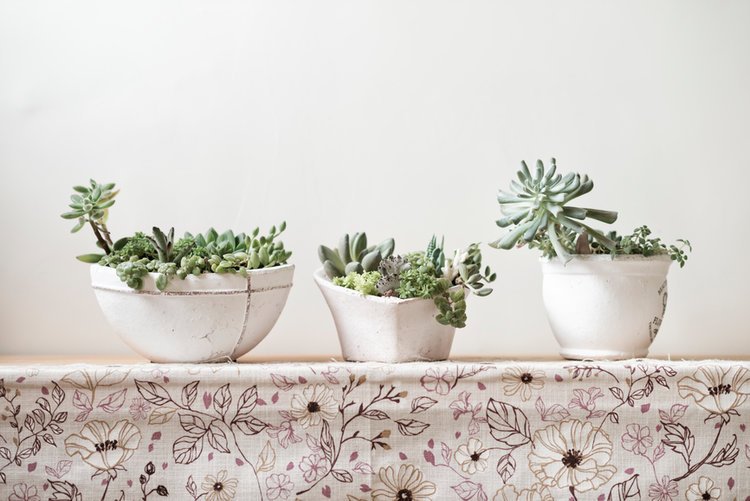
4 Ways To Make The Most Of Living In A Tiny Home
Creating Space In Your Small Home
Think of a cave—dark, dingy, dirty, cluttered with rocks and pebbles, isolated, cramped. Not exactly the environment you want to call home. After all, you’re not a treasure troll. At times, though, you may look at smaller rooms in your home—or your tiny home itself—and feel as though you’re nearing cave-like standards.
So how might you turn these spaces around and live well within small spaces? Simple. Do a little redecorating with well-lit, airy, clean, organized, inviting and spacious. To help you out, here are four simple ways to transform your small space from cave-like to palace-esque.
1. Emphasize Natural Light and Warmth
Treasure trolls may live in natural environments, but again, you are not a treasure troll, and a musty grotto is not the warm, comfortable atmosphere you’re trying to create.
Fortunately, nature has much more to offer than dark and dingy, and in your fight against small living space, sunlight is going to be one of your greatest allies. So before you make any major changes to your home, look at your windows. Are they covered with dark, heavy curtains? Are said curtains always closed? If so, throw them open and look at how easily you’ve just opened up your space.
If the amazing curtain-opening tactic isn’t enough, not to worry. Here are some other ways you can emphasize natural light, open air and general warmth:
Windows and Skylights – Installing a window or skylight lets more natural light pour into your living space, making it instantly feel bigger, warmer and more inviting.
Mirrors – Hanging a nice, large mirror or even a matching collection of smaller mirrors does wonders. Mirrors create the illusion of space because, in addition to reflecting the room, they also amplify light.
Plants – Plants may not do much in terms of lighting, but they do add a certain comfort to a space. And — bonus — house plants have been known to boost mental and physical health.
Fabric and Artwork – Draping your walls with light or even colorful fabrics and artwork can add real depth to a living space. And that’s depth in two senses — 1) Making a room appear more spacious and luxurious, and 2) Convincing guests that you’re deeply sophisticated.
2. Color design 101
Lighter hues reflect and spread light, while darker shades absorb and mute it. Generally, when you’re trying to make a space look larger, it’s best to choose a light, neutral color for your base and a darker color for accents.
If you want to add a little more flare to your space, though, it never hurts to add little pops of color here and there — so long as you don’t let it go as far as, say, a Lisa Frank notebook cover. For instance, maybe you choose to hang a colorful piece of artwork, or you paint a piece of furniture a little brighter than you normally would.
Whatever you do, don’t be afraid to make mistakes. Artists repaint their work dozens of times before they find the look they want. And your space is your canvas. When you create a silly look, laugh at yourself and try something else. And, when in doubt, ask the pros to help you delve into the science of color.
3. Lighten Up
Sunlight isn’t 24/7, so of course you’ll need to invest in some proper lighting for your space. To really get that bang for your buck, try out fixtures with multiple settings. You can use the brightest setting to recreate sunlight during an evening of board games, a medium setting when you’re winding down after work and the lowest setting for a romantic night in with your honey.
As strange as it may sound, though, where you place your light fixtures is paramount to making the room feel more spacious. Say, for instance, you have three light, neutral-colored walls and one darker accent wall. In this scenario, you might try putting a good lamp very near that accent wall so that light emits from that side of the room. Otherwise, — say you put the lamp on the opposite wall — that darker color will absorb the light, giving its side of the room something reminiscent of that cave feel you’re trying to avoid.
4. Stay Organized
The final, and arguably most important, step to maximizing your small space is creating and maintaining an organized environment. There are five simple but extremely effective organizational moves you must make if you want to open up your small space:
Get rid of the clutter. Spring cleaning isn’t just for spring, you know!
Create a clear pathway. Don’t cram in so much furniture that you can barely squeeze through the area. If you can’t find a way to space it out, you may have too much or too bulky of furniture.
Guide the eye. Draw guests’ eyes to the window, art, entertainment unit — whatever it is that shines in the room — by pointing rugs, furniture, lights and/or your pathway at it.
Store wisely. Invest in attractive and innovative storage, such as shelves mounted on the walls. Effective storage means less clutter taking up your precious floor space. While you’re at it, you might investigate eco-friendly storage.
Invest in space-saving furniture. If the space is small, you need innovative furniture. Beds that fold into walls, coffee tables that conceal chairs, couches that open into storage units — there’s nothing you can’t find for your space.
No matter how small, dim or cave-like your home feels right now, it has the potential to transform into a space you can be proud of. So take the first step. Follow these tips and leave your treasure troll days behind you.
